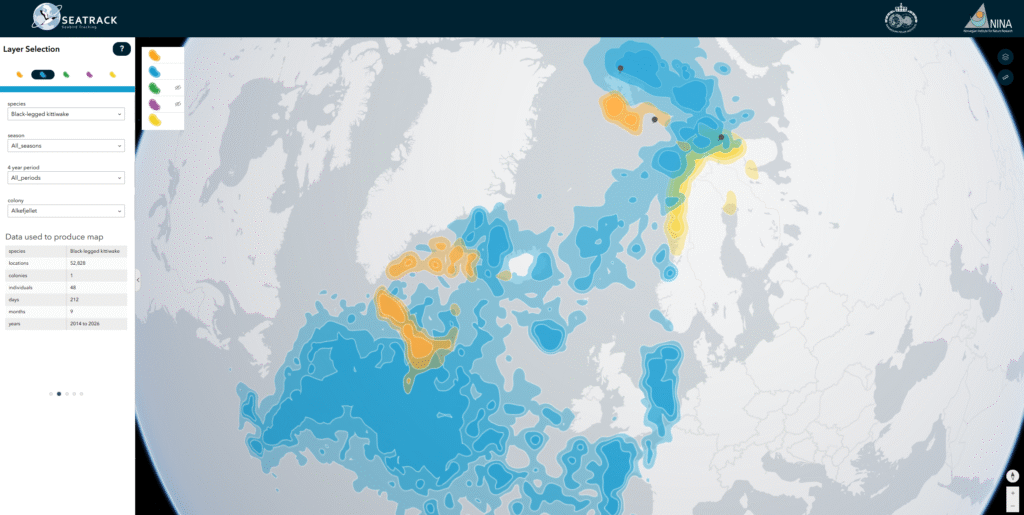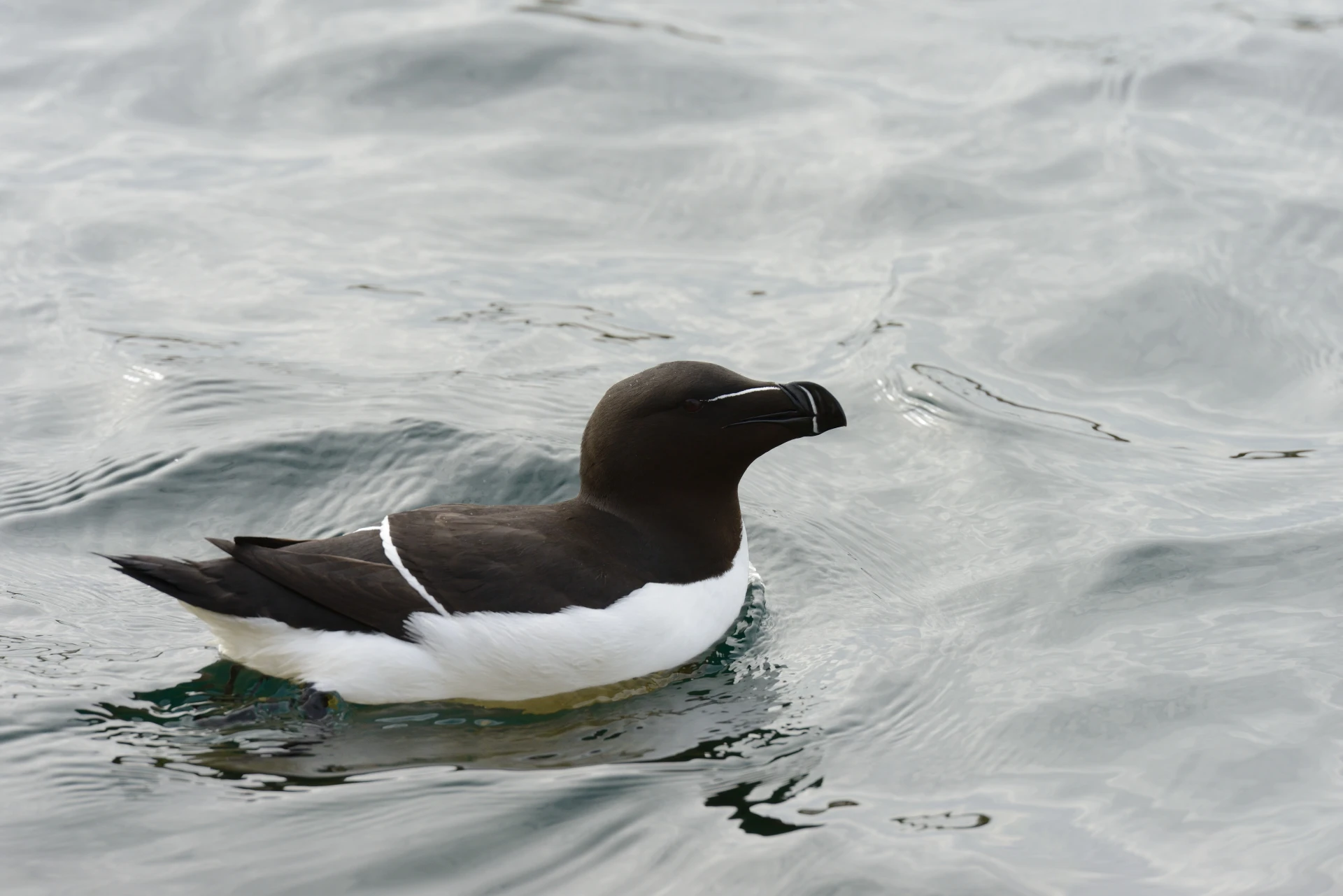Razorbills (Alca torda), representing one of five pelagic diving species within the scope of the project, are being instrumented with GLS loggers at 16 SEATRACK localities.
The razorbill was added as a SEATRACK species in phase 3 of the programme. The first GLS loggers were deployed in 2023.
Razorbills are classified as being “of least concern” by the IUCN with significant increases for most European population during the past decades.

The razorbill is a member of the auk family and the only species in the genus Alca. They are distributed along the North Atlantic, with most breeding pairs and the largest single population in Iceland. Razorbills are mostly black with a white underside. They have a razor-shaped, curved bill with a thin white line from the eyes to the bill.

They breed along rocky shores, cliffs and on islands in crevices. This species may also use abandoned burrows built by puffins or rabbits for nesting. Razorbills are very agile underwater and can dive up to 120 m deep to feed on small schooling fish like capelin or cod.
Featured image: Sven-Håkon Lorentsen.

View data



